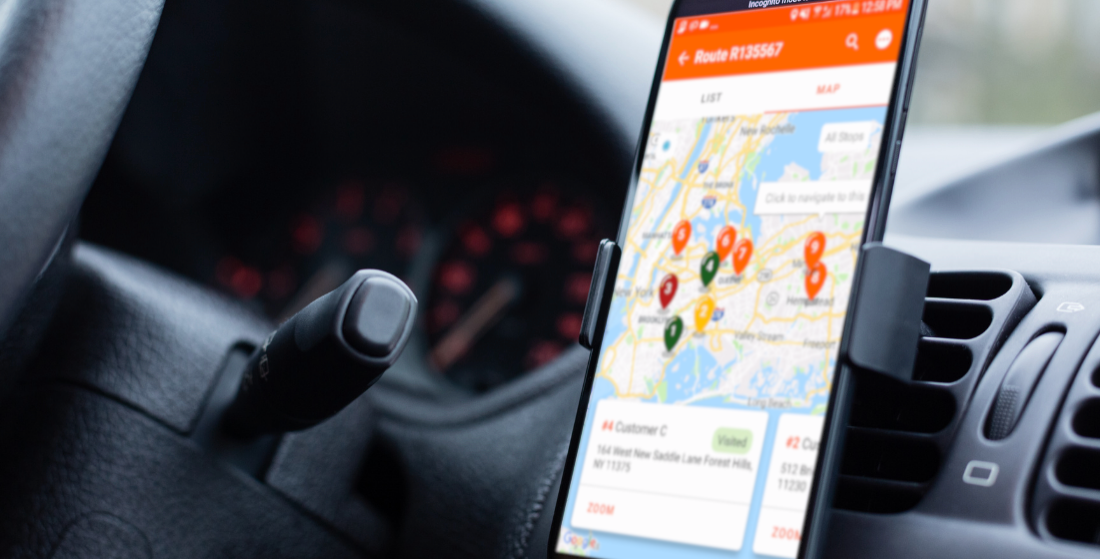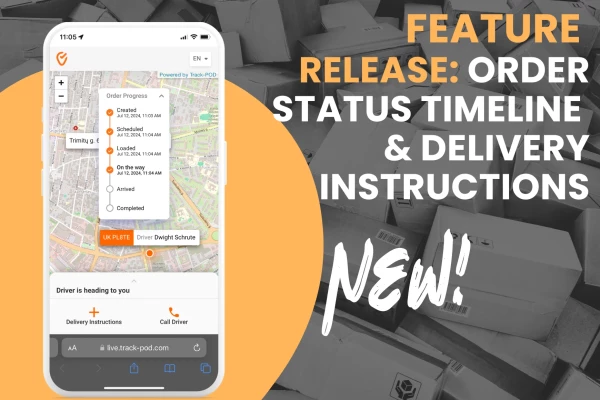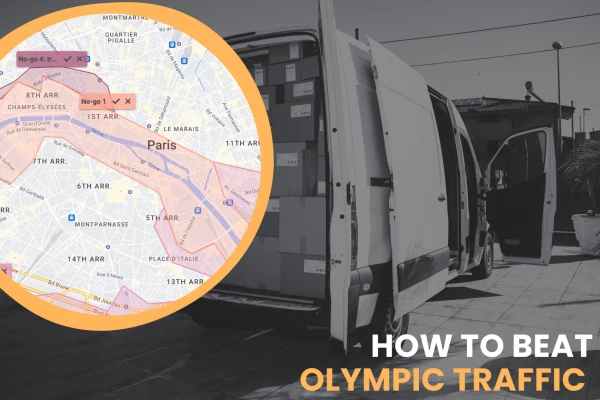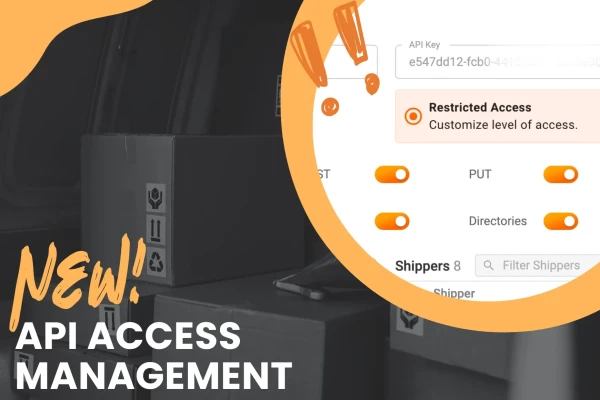What Is Route Optimization? 5 Questions Answered
If you run a business that involves delivering goods, you might have come across the term route optimization before.
Dropping off goods to your customers can take a serious amount of time, and the longer your driver is on the road, the more money it’s costing your business. This applies to both B2C and B2B companies.
Being able to speed up this process using technology can save your company a significant amount of time and money. Rather than rely on human assessments and predictions, you can now use route optimization software to calculate the best route to take thanks to technology.
To help you understand everything there is to know about route optimization, we’ve created this comprehensive guide.
We are going to break down the different route delivery methods currently on the market, analyse their pros and cons and discuss the best software to drive your business forward.
Whether you make routine drop-offs or you manage an unpredictable delivery schedule, get ready to switch to a new digitalized approach.
Table of Contents
What is route optimization and is it important?
Can Google Maps optimize a route?
What is the best free route planner app?
How free route planning software could damage your business?
The best professional route planning software.
What is route optimization and is it important?
Route planning involves calculating and analysing your upcoming delivery schedule and then trying to figure out the best route for your driver(s).
While this might seem like a straightforward task, you’ll need to consider a number of things such as your goods-in-transit and whether you have any perishables onboard, the time your driver will need to off-load the goods and fill out any paperwork at each stop, and how far each location is from one another.
Roadwork, traffic and your employee’s shift all need to be taken into consideration to develop the best course of action. If you have a number of drivers in a fleet, this simple calculation can become quite complex.
Here is a breakdown of what can impact journey and delivery time:
- Delivery guarantee time windows.
- Driver shifts and break allocations.
- The type of goods being delivered. For example; fresh, frozen, fragile, live, heavy.
- The number of stops you need to make.
- Paper-work requirements.
- Driver and vehicle prerequisites. Do you require a certain type of vehicle or a driver with a specific set of skills?
- Weather conditions on the road.
- Traffic and roadwork delays.
For a company that has a routine schedule, planning can be difficult, but manageable. However, if you’re dealing with multiple locations and a different or unpredictable delivery schedule, things can start to become confusing and difficult to plan ahead of time.
Of course, you could assign this task to a professional who might take a full day to develop a cost-effective solution that works for your unique business needs. But this means paying an employee for a full day’s work - something some companies simply can’t afford to do!
The solution? Harness the power of algorithms to calculate complicated cost and time assessments to determine the optimal route in real-time.
Can Google Maps optimize a route?
Some businesses rely on Google Maps to help their delivery drivers save time while on the road. So let’s review this method.
Pros
- Free software.
- Easily available on smartphone devices.
- User-friendly interface.
- Google Map’s algorithm identifies the shortest possible distance or journey time from A to B.
Cons
- Google Maps can not provide an optimal stop order for the driver, leaving this calculation to you or your delivery driver.
- Google Maps doesn’t provide key features such as real-time driver updates or electronic proof of delivery.
- Although Google Maps may be able to schedule a route of up to 25 stops, it doesn’t have the ability to rearrange your total journey and help you save time and fuel expenses.
Since Google Maps is unable to assess the stops and provide the driver with the shortest and best route to take, it falls short of a route optimization app.

What is the best free route planner app?
There are a handful of free vehicle routing software on the market that can help businesses to plan their itinerary across multiple stops such as:
Free to download and use, if you’re a start-up business with a limited delivery service, a free app could help you to deliver goods on time while avoiding traffic and cutting costs on fuel.
However, if you manage multiple drivers, large orders, have delivery windows and a with a wide range of goods on-board, you might want to invest in professional software.
How free route planning software could damage your business
Delivery is a massive part of customer service, and when you get this right, you can turn a new customer into a loyal brand ambassador.
As you may already know, positive customer feedback can do wonders for your business, so the more happy customer you create, the stronger your reputation will be.
Fail to meet a delivery window and deliver an order later than expected due to a free app, and you run the risk of significantly damaging your business.
While free apps are handy for new start-ups with a limited budget, professional-grade software is a sound investment when it comes to planning and scheduling deliveries and will help you hit your delivery windows while saving time and money too.
Limitations of free route planning software
- While free apps might be able to give you the shortest journey, they won’t be able to provide real-time feedback between customers, drivers and your business.
- Most free apps aren’t able to share live updates relating to the driver’s location. This can frustrate customers who are waiting for a delivery.
- Usually, a free app won’t provide the driver with delivery notes, which can cause communication issues within your business.
- These days electronic proof-of-delivery is a must when dropping off goods. Without this feature, you run the risk of customer’s claiming they didn’t receive their order.
- Free software can often be limited and unable to grow as your fleet expands.
The best professional route planning software
It’s often better to invest in professional-grade software to optimize your deliveries, especially if you’re a medium to a large company with a fleet of drivers.
Although, it’s important to bear in mind that most truck route planners are now very affordable and will greatly benefit most businesses. Let’s take a look at the top benefits a professional routing software will have.
- Save your business time and money by providing the best route possible using a complex algorithm.
- Present your driver with the optimal order route depending on the goods they need to deliver, time slots and traffic/weather conditions.
- Update drivers with real-time delivery/dropoff notes from customers.
- Provide real-time updates on the location of the driver for customers waiting for deliveries.
- Include an electronic proof-of-delivery feature within the software itself to empower your fleet and reduce customer complaints. This may include e-signature technology and photographic evidence of delivery.
- Give you a top-level overview of your fleet in action.
- Provide valuable feedback and analytics on logistics performance allowing you to see when and where you’ve been able to cut fuel expenses and speed up deliveries.
If you would like to experience the benefits of using a professional-grade route optimization software, you can now try Track-POD for 7 days completely free of charge and with no commitments or credit card requirements.
By signing up for a 7-day free trial of Track-POD, you will unlock a wide range of benefits and instantly optimize your approach to deliveries. Our cloud-based system is compatible for use globally and will transform your logistics management. But don’t just take our word for it, try it yourself for free today.
- Route Planning
- Route Optimization





